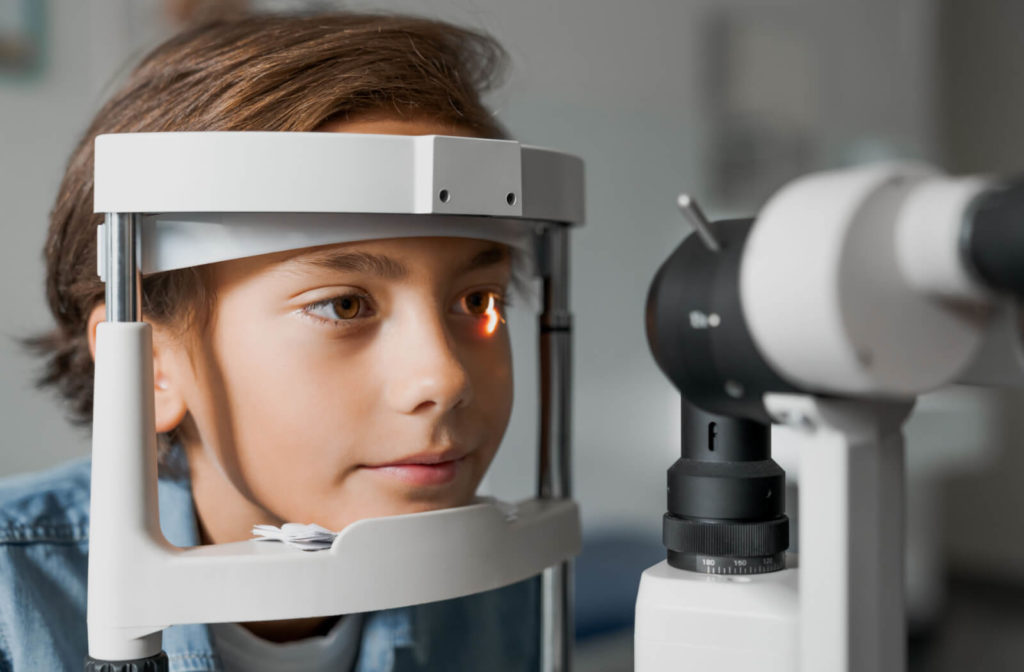Myopia, also known as nearsightedness, is a common visual condition wherein individuals experience difficulty seeing objects situated beyond their near point of vision. This condition is caused by the elongation of the eyeball and other genetic and environmental factors.
While myopia is prevalent in teenagers and young adults, it can occur at any age. Understanding the factors influencing myopia progression and stabilization is crucial for managing this vision condition effectively.
Myopia tends to stabilize in early adulthood. However, the factors influencing its progression are complex, and for some individuals, myopia progression may continue later in life.
Regular eye exams, a healthy lifestyle, and consultations with eye care professionals are crucial for managing myopia and promoting overall eye health. In some cases, other myopia control methods, such as atropine drops or specialty contact lenses, may be recommended to help children slow their myopia progression over time.
Factors That Influence Myopia Progression
There are a number of factors that influence the progression of myopia, including:
Age
When it comes to myopia, the age at which the symptoms of this condition stabilize can differ from person to person. In most cases, myopia begins to stabilize during late adolescence and early adulthood.
As a rule of thumb, it stabilizes when a person’s eyes stop growing, and this growth process typically ends around the age of 20. However, this is not a definitive indication of when myopia stabilization will occur.
Genetics
Family history plays a role in myopia development. If one or both parents have myopia, the likelihood of their children developing myopia can be higher. The genetic influence on myopia progression and stabilization is an area of ongoing research.
Environmental Factors
Lifestyle and environmental factors can impact myopia progression. There are ongoing studies to assess the degree to which prolonged near work, lack of outdoor activities, and excessive screen time may contribute to myopia development. Implementing habits that prioritize eye health, such as taking breaks during near work and spending time outdoors, may potentially help prevent myopia progression.
Can Your Prescription Stability Change?
Once your prescription stabilizes, meaning there are minimal changes in your prescription strength over a certain period, it can indicate that your myopia has likely reached a stable phase. However, your prescription can still change over time if your vision is influenced by other factors, such as eye injuries, eye surgeries, or other eye diseases and conditions, including cataracts and presbyopia.
Management Strategies for Myopia
Eyeglasses and contact lenses are common tools for correcting myopia. Regular updates to your prescription may be needed during periods of progression.
Orthokeratology is another option for myopia control. It involves using specially designed contact lenses to reshape the cornea temporarily. This method is often used to control myopia progression for children.
Lastly, some doctors may recommend atropine eye drops or other specialty contact lenses to help slow myopia progression in children. The use of atropine should always be under the guidance of an eye care professional.
When Should Myopia Control Start?
According to research findings, the younger a child develops myopia, the greater risk they may have for severe myopia progression. An early myopia start means more years for a child’s vision to develop, with a higher risk of developing high myopia.
It is imperative to start corrective action as soon as possible when your child is diagnosed with myopia. The earlier you start, the greater your chances may be to decrease myopia progression and reduce the final degree of myopia your child experiences.
How Do You Know Your Child Has Myopia?
Nearsightedness can appear gradually or suddenly. It often begins between the ages of 6 and 14 and worsens until your early twenties, when it normally levels off.
Common signs of nearsightedness include:
- Objects in the distance appearing hazy
- Squinting in order to see clearly
- Headaches
- Strained vision
- Difficulty seeing the board in class
- Difficulty playing sports
- Sitting too close to the TV

What Do You Do When Myopia Doesn’t Stabilize?
In some cases, myopia may not stabilize and visual decline can continue throughout life. For instance, if your eye’s elongation persists, it may cause further degradation of the lens and vitreous body, leading to other eye problems.
Regular visits to an eye doctor are essential for tracking myopia’s progression to help prevent visual loss. We can monitor your eye health and help you preserve your vision throughout your life.
The Road to Myopia Stability
Understanding when myopia stabilizes can create an opportunity to build good habits that help protect your eye health and stop myopia from worsening. It is imperative that those with myopia get regular eye exams to monitor their vision and myopia progression.
At Golden Hills Optometry, we can track your myopia’s progression and help kids prevent any further visual loss with myopia control methods. Book your appointment today to get started.



